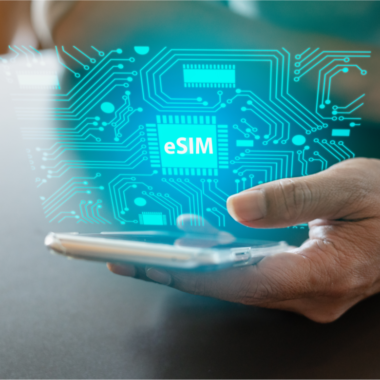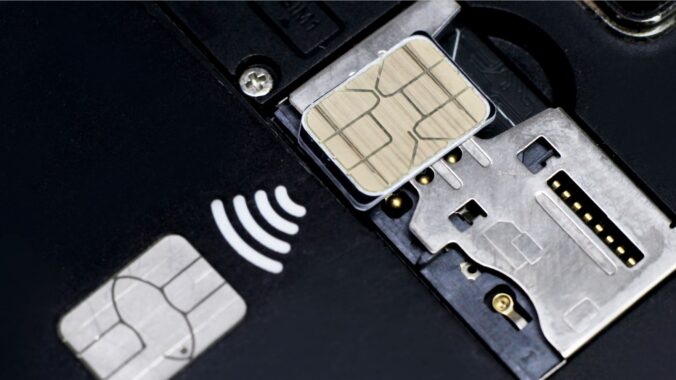In this blog, I am joined by my colleague Marylène Arnoux-Roetynck, [Marketing Manager] to discuss best practices for optimising eSIM adoption and ensure eSIM implementation growth.
What is the current context for the eSIM Market?
DB: The eSIM market has come of age. Eurosmart reports that more than 200 million eSIMs were shipped worldwide in 2019. By 2024, ABI Research estimates there will be 2.5 billion eSIM enabled consumer devices, with another 1 billion supporting IoT applications.
In the consumer market, eSIM adoption is being driven by the use of smartphones, as OEMs offer an ever-growing portfolio of handsets.
In addition to this, in a recent survey of 100 MNOs conducted by the GSMA, nearly 80% said that eSIM capability should be as much a priority as 5G is for OEMs. This growing ecosystem is being built on firm foundations; GSMA specifications for eSIM are now mature and field proven. Not to mention the further growth expected for IoT devices, according to the GSMA, meaning that
IoT is a promising and growing market for eSIM.
So, can all MNOs benefit from this growth right away?
MA: Even in the context of a very fast-growing market, commercial success is not a given. The key challenge for these operators is not technical delivery, but rather it lies in the commercial domain.
How can an MNO make the most of its eSIM offer alongside its existing traditional portfolio? What are the plans to keep attracting and retaining subscribers? What is needed to have a successful eSIM adoption?
DB: This is what we looked to answer thanks to an analysis of MNOs’ best practices in terms of maximising the adoption and usage of eSIM, based on the most successful commercial and marketing strategies currently being pursued. The study is based on real-life experiences of MNOs all over the world.
Can you tell us more about those real-life best practices for maximising eSIM adoption?
MA: The first best practice is the so-called ‘eSIM for everyone’ policy. Although it may look obvious, maximising the reach of the eSIM offer, and seeking to on-board as many new subscribers as possible without segmenting them, is critical to success. MNOs would address both pre-paid and post-paid customers and look beyond the smartphone to embrace the plethora of other connected devices such as smart watches, tablets, PCs that also incorporate eSIM, making the adoption of those devices as seamless and enjoyable as possible from a technical but also from commercial standpoints. This includes proposing attractive tariff plans which include eSIM, in order to keep current customers and attract new ones.
DB: To illustrate this, AIS in Thailand has adopted an ‘eSIM for everyone’ strategy and targets new customers on top of existing ones with its‘multi-country travel eSIM. ’Movistar in Spain has also adopted an ‘eSIM for everyone’ strategy, with multiple eSIM capable devices such as iPhones, ipads, Samsung Galaxy smartphones and smart watches. The service covers multiple devices for both existing and new post-paid customers. The eSIM service also comes with a ‘try and buy’ promotion during the first month following subscription. This ‘try and buy’ trial attracted many new customers within just one month. The benefits of having multiple eSIM-capable devices also provide customers with the opportunity to experience different eSIM use cases and contributes to boosting adoption.
Following the same approach, Zain in Bahrain made their eSIM service immediately available to both post-paid and pre-paid customers with new Apple iPhones that launched at the end of 2018. The switch to eSIM came with a try and buy promotion.
Are there any preparation stages to support ‘eSIM for everyone’ policy?
MA: The first step is to promote it through active and positive communication with consumers. The idea is to build a dedicated eSIM offer, not just a derived offer from classic SIM, by educating and informing both staff and customers on the unique benefits of the eSIM. In other words, MNOs should build a strong eSIM brand for their service and invest in Communication & Marketing around it, on top the usual devices’ promotion. In this regard, Claro was the first MNO in Brazil to launch eSIM to cell phones in March 2019, calling their service “e-Chip”, giving eSIM a dedicated name. Whereas, Three in Hong Kong promoted its “eSIM Unlimited Roaming & Fun” data package highlighting that eSIM is easy and hassle free to roam. Rakuten has even created its own original eSIM device and provides a true eSIM experience thanks to their ‘eSIM Rakuten Mini’.
This communication can typically be completed by dedicated online tutorial videos, community blogs and FAQs sections on websites. For example, see how O2 UK and Three in the Nordics have implemented this.
Let’s now talk about use cases: what types of user experience would maximise eSIM adoption and usage?
MA: User experience is the second key best practice for MNOs to maximise eSIM adoption,using eSIMs’ ability to support seamless digital journeys.
For instance, initial digital enrolment can be done through trusted digital ID services, comprising ID document and biometric verification, in real time and in-line with ID verification regulations and followed by eSIM activation via web, mobile app, or any other means. In this regard, MNOs directly benefit from eSIMs ability to support instant activation of mobile subscriptions and, therefore, providing full and seamless digital journeys. In this regard, Telefonica in Germany offers a seamless and digital end-user experience with multi-channel digital ID verification, including on mobile phones.
DB: In addition to this, MNOs need to give users the choice to activate their eSIM mobile subscriptions through of variety of means, , including via QR code activation through Vouchers, MNO’s own mobile app such as the My Verizon app, by Verizon for instance, GSMA’s Discovery services, and entitlement servers for wearables.
MA: MNOs should showcase the valuable innovative digital use cases that eSIM solutions bring, as those would further increase the adoption of the service.
Solutions that eSIMs enable include inbound roaming where users would buy their pre-paid subscriptions in advance of travelling or upon arrival at the destination country, with a local tariff, avoiding premium roaming fees. For example, AIS in Thailand offers a complete digital experience with an eSIM QR code delivered instantly after a purchase. The eSIM can be activated in a participating country within 30 days of purchase by scanning the QR code.
Innovative enterprise use cases can also be created, with personalised subscriptions for an organisation’s employees, activated and managed seamlessly without the need of issuing and fitting traditional SIMs.
DB: In summary, it is really a matter of adoption and usage and MNOs have the opportunity to build their strong eSIM brand within their overall digital strategy which will help to retain their customers and capture new ones. The new generation of 5G networks will enable the tremendous growth of consumer connected devices, so MNOs will have a crucial role to play in servicing customers in their digital journey with innovative digital services, based on existing trusted digital ID and subscription management solutions, enabling to seamlessly pair up subscribers with their objects and activate them.
Tell us what you think and find out more about the best practices for optimising eSIM adoption from our eBook, which also contains real-life use cases!



